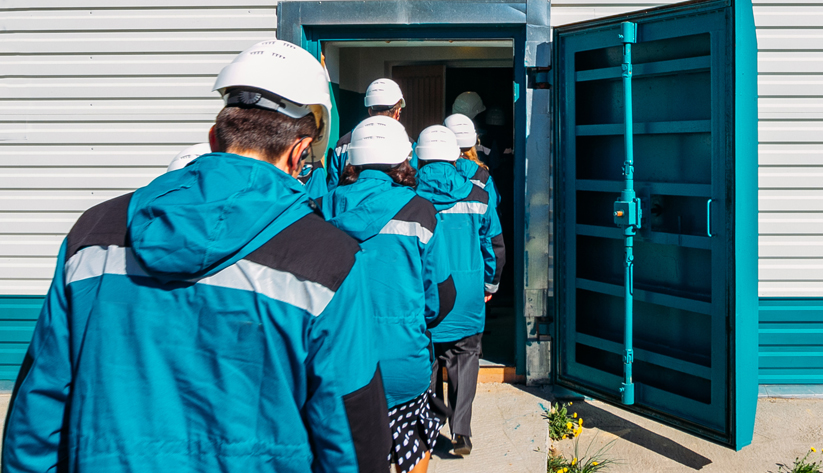
The director of the Federal Reserve Bank of Atlanta’s Center for Workforce and Economic Opportunity (CWEO), Stuart Andreason, published an article outlining resources that policymakers can tap to quickly help workers displaced by the effects of the novel coronavirus. One such measure is an obscure component of the unemployment insurance program—short-time compensation—that offers stopgap pay to workers whose hours are temporarily reduced. The program helped save half a million jobs during the Great Recession. Economy Matters staff writer Charles Davidson spoke with Andreason about his research.
Charles Davidson: What led you to produce this piece in a relatively short time, Stu?
Stuart Andreason: Over the first few days of March, I heard a great deal about the spreading coronavirus in the United States and the increasing need to work from home. We at CWEO study low- and middle-income workers. So when something like this pandemic comes up, we think about how it affects them. It started with the simple question of how many people actually could work from home. Think about all the things that can’t happen through working from home. You can’t serve coffee or food, or produce things in a manufacturing plant, by and large, which was a concern. And when you look at some surveys I cite in the article, very few people, proportionally, could work from home. The rest of it was concerned with how we support these people.

The Atlanta Fed’s Stuart Andreason. Photo by David Fine
CD: How does this work fit into the Fed’s role?
SA: Think of our dual mandate—maximum employment and low, stable inflation. Our job is to maximize employment, get people connected to work, and make sure they’re able to be productive. When you have a big shock like this virus, businesses have to adapt a lot. And there’s plenty of research to suggest that if people lose their jobs and get disconnected from their job, it’s very difficult for them to rebound, which is where the whole concept of short-time compensation comes in. It’s a way to keep people engaged in work even if they’re working a bit less and potentially smooth out the bumps and dips that people can feel when something like this disrupts life.
CD: Did anything you found surprise you?
SA: Other countries have their unemployment insurance programs work much more like the short-time compensation program all the time. But it’s not a huge program in the United States. Yet it’s been an important way to protect people’s work for a long time. The piece identifies a report that went to Congress evaluating the program. It saved half a million people from getting laid off from 2008 through early 2016. That’s not a trivial number.
CD: How would it work, basically?
SA: For people who’ve had to stay at home for two weeks without pay because of a quarantine, this program would get them about $900 of compensation. Which means they’re still losing $600 worth of wages, but it goes a long way toward helping someone make a rent payment or a mortgage payment.
CD: So this short-time compensation plan is a federal program that is in place already?
SA: It’s part of the larger unemployment insurance program, which is a federal program but states administer it. Twenty-six states have active short-time compensation programs running, including a lot of populous states. Even among a lot of those states, though, it’s not always highly used. To use it for a two-week quarantine would require some relatively significant administrative changes, but in a public health crisis, when legislation’s getting passed pretty quickly, this is a way to use systems that are in place to support workers.
CD: Would many companies see a motivation to act on their own, to keep people happy and attached? But smaller companies wouldn’t have the wherewithal to do that, would they?
SA: Yeah. As I was working on this, other members of the center and I talked to a number of small-business people, and that’s exactly who needs support. There’ve been tons of mostly larger companies saying, “We’re going to help people bridge that gap.” And that’s wonderful. But we talked to small firms that said they had lost contracts, and they didn’t have work to give to people. One had a contract at an NBA arena. They lost that contract, and they had 34 workers that didn’t have anything to do, and they don’t have the cash reserves or revenue that these bigger firms do. So this would help serve those types of firms that employ a lot of people across the economy.
CD: How much could this particular measure do to blunt the overall macroeconomic damage, especially to individuals and families?
SA: It might not have a huge effect in terms of, say, lost economic output. But in the current system, if output goes down 20 percent in a state, for example, then you’d generally see about 20 percent of workers laid off and they’d be completely without work. The short-time comp program lets you reduce people’s hours but not lose their jobs. Everyone would get some compensation, and everyone at that firm would share a little bit of that lost demand.
CD: Will this pandemic bring more attention to these issues long term?
SA: That’s become really interesting. You’ve seen the research and policy community grapple with how they deal with something like this. Particularly for employment, this is new and different. This is not to diminish other situations, but this is not a hurricane that affects one area. It’s affecting everyone, and it’s more drawn out than most people originally expected. To be clear, the short-time compensation program, and others discussed in the article, are parts of a solution. There’s going to be a need for a lot of interventions. This is one that helps bridge a specific segment—people who are out of work and need to get back.
CD: What’s next in this line of research?
SA: We’re rushing to do a few more of these on what happens to gig workers, and how hospitality workers might transition to other work for a period of time.
CD: Sounds like CWEO is producing work that could be useful right now.
SA: Tying this back to our bank’s mission of enhancing economic mobility and resilience—this is in real time, and I was trying to think about resilience.




